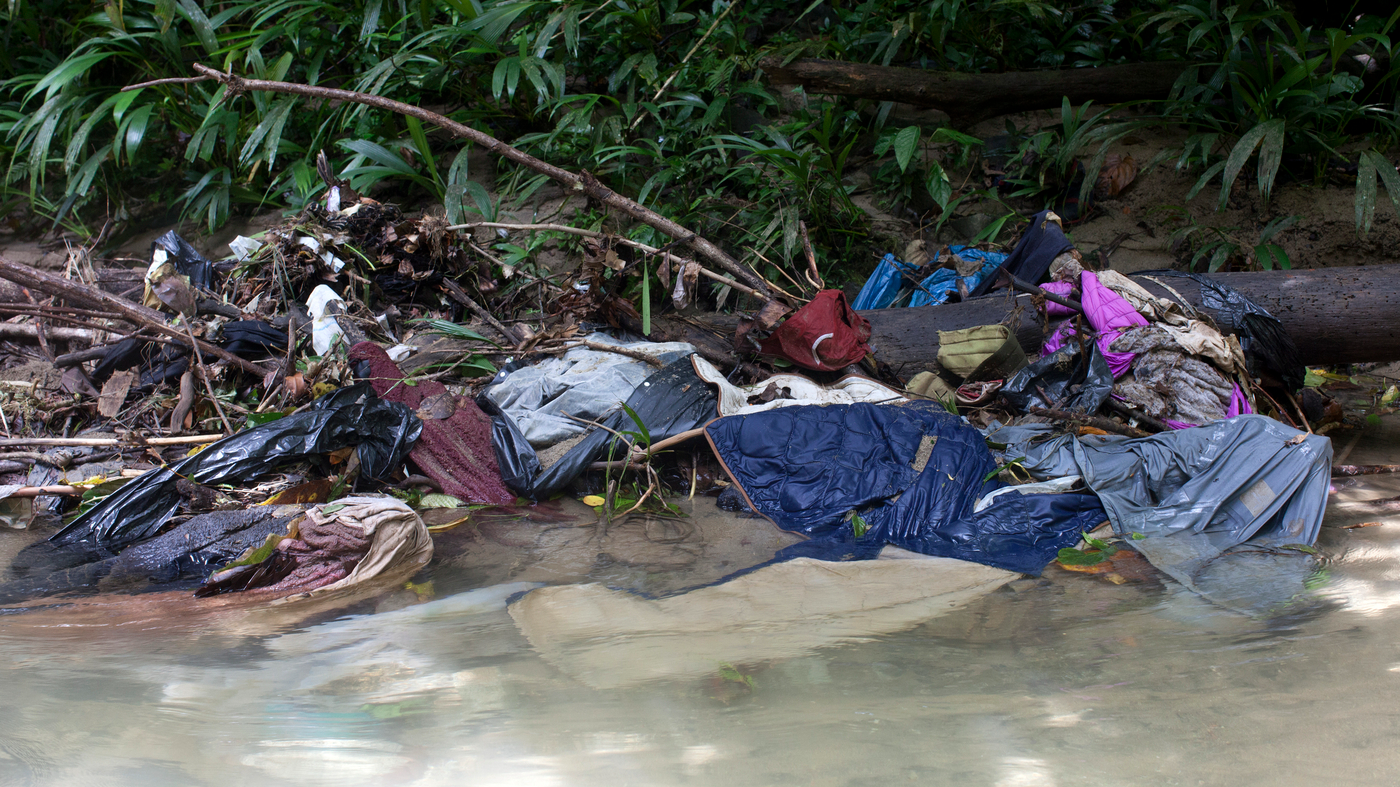The Darién Gap, a dense and treacherous rainforest stretching between Colombia and Panama, has long served as a formidable barrier, safeguarding its Indigenous communities from outside influences.
For centuries, this isolated region’s reputation has deterred all but the most daring adventurers. However, the recent surge of migration—over 500,000 people traversing its rugged terrain annually—poses unprecedented threats to both the local ecosystem and the way of life for those who call this forest home.
The Growing Threat to Indigenous Communities
The influx of migrants has alarmed the Indigenous populations in the Darién Gap. Yenairo Aji, a community leader in Nueva Vigía, voiced concerns over the environmental degradation resulting from this sudden migration. “We never anticipated this,” Aji explains, “and now we find ourselves overwhelmed by trash.” This increase in waste threatens the very essence of their existence, as their livelihoods rely heavily on the local ecosystem.
Population and Environmental Impact
The Darién Gap is home to around 8,000 residents, primarily from the Emberá-Wounaan and Guna Indigenous groups. Historically protected by its inaccessibility, the rainforest has remained largely untouched by industrialization.
However, since the COVID-19 pandemic, migration patterns have drastically shifted. In 2019, only 24,000 individuals made the trek. By 2022, that number ballooned to 250,000, and it doubled again in 2023, marking a worrying trend for both the people and the environment.

Humanitarian Concerns Amid Environmental Crisis
As human rights organizations like Médecins Sans Frontières and Amnesty International raise alarms about the rising humanitarian crisis, the environmental implications of mass migration are often overlooked. The pristine landscape is becoming one of the world’s most significant migration routes, leading to unmanageable waste and pollution levels.
The Toll on Natural Resources
Residents report that the once-clear waters of the Turquesa River are now littered with discarded cans, clothing, and plastic containers. Tania Chanapi, another community leader, emphasizes the dire situation: “We can’t use the river for drinking or washing anymore. It’s causing illnesses like diarrhea and vomiting.”
With the influx of people comes the degradation of natural resources. Gasoline spills from boats and human waste are contaminating local waterways, jeopardizing the health of residents and wildlife alike. “Before, we relied on the river for everything. Now, it’s unsafe,” Chanapi laments.
Economic Changes and Cultural Shift
Initially, the economic boost from the migration seemed beneficial. Many locals engaged in people-smuggling, which often paid better than traditional farming. As a result, some communities saw improvements in infrastructure, including electricity and internet access. However, this shift has not come without significant costs.
Loss of Traditional Livelihoods
The reliance on migrant trade has led to a decline in local agriculture. Traditional crops like plantain and corn are being replaced by more lucrative, but transient, economic activities. Esilda Tunay, a local teacher, notes a troubling trend: “I see more children abandoned as their parents leave for days to work with migrants.” Alcoholism and social issues are rising alongside the influx of cash, fundamentally altering the community fabric.

Government Response and Future Challenges
Despite pressure from the U.S. to curb migration, regional governments have struggled to develop effective solutions. Panama’s new president, José Raúl Mulino, initially vowed to deport migrants but has since acknowledged the complexity of the situation. Efforts to control migration include erecting fences and monitoring routes, yet these measures have not sufficiently addressed the environmental crisis unfolding in the Darién.
Urgent Action Required
Organizations like Global Conservation highlight the urgent need for intervention. The Darién National Park, which encompasses some of the most biodiverse areas on the planet, is facing critical environmental threats. “People think it’s a remote area where no one lives. In reality, local communities are suffering from pollution caused by half a million migrants,” says Jeff Morgan, founder of Global Conservation.

Panama’s Ministry of Environment has acknowledged the gravity of the situation, estimating that every migrant leaves behind approximately 9 kilograms of waste. With up to 2,000 people crossing daily, the environmental impact is staggering. Immediate measures, such as implementing waste management systems and promoting responsible migration practices, are crucial.
Conclusion
The crisis in the Darién Gap exemplifies the intersection of migration, environmental degradation, and cultural upheaval. As communities confront the realities of pollution and changing economies, it becomes clear that collaborative efforts are essential to protect both the Indigenous populations and the invaluable ecosystems they rely on.
Addressing this issue requires a multifaceted approach, combining humanitarian assistance with environmental conservation to secure a sustainable future for all who inhabit this fragile region.








